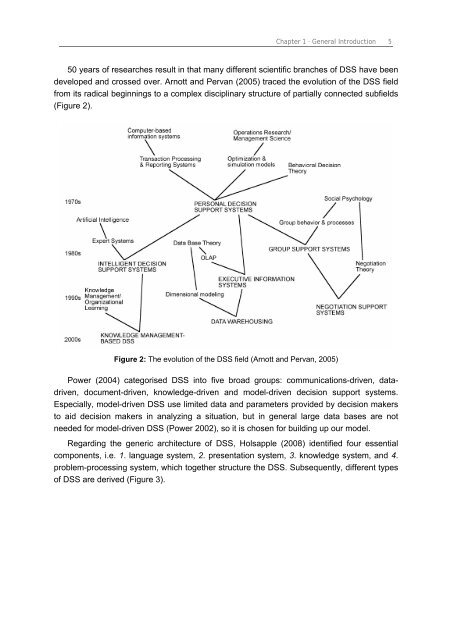Chapter 3 Decision Support Model (IUWS-DSM) - Tubdok
Chapter 3 Decision Support Model (IUWS-DSM) - Tubdok
Chapter 3 Decision Support Model (IUWS-DSM) - Tubdok
Create successful ePaper yourself
Turn your PDF publications into a flip-book with our unique Google optimized e-Paper software.
<strong>Chapter</strong> 1 · General Introduction 5<br />
50 years of researches result in that many different scientific branches of DSS have been<br />
developed and crossed over. Arnott and Pervan (2005) traced the evolution of the DSS field<br />
from its radical beginnings to a complex disciplinary structure of partially connected subfields<br />
(Figure 2).<br />
Figure 2: The evolution of the DSS field (Arnott and Pervan, 2005)<br />
Power (2004) categorised DSS into five broad groups: communications-driven, datadriven,<br />
document-driven, knowledge-driven and model-driven decision support systems.<br />
Especially, model-driven DSS use limited data and parameters provided by decision makers<br />
to aid decision makers in analyzing a situation, but in general large data bases are not<br />
needed for model-driven DSS (Power 2002), so it is chosen for building up our model.<br />
Regarding the generic architecture of DSS, Holsapple (2008) identified four essential<br />
components, i.e. 1. language system, 2. presentation system, 3. knowledge system, and 4.<br />
problem-processing system, which together structure the DSS. Subsequently, different types<br />
of DSS are derived (Figure 3).

















